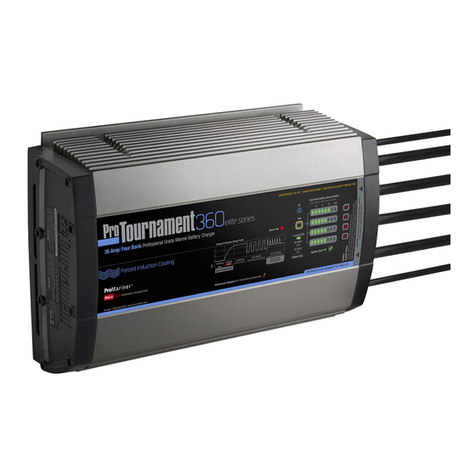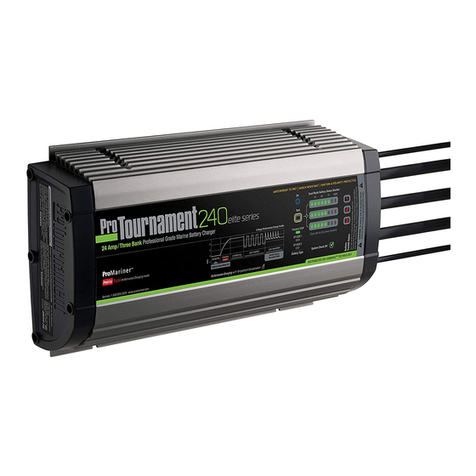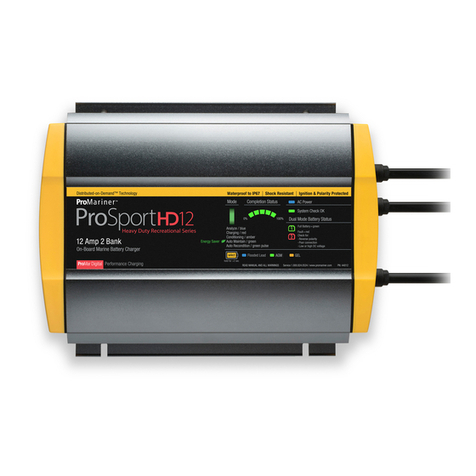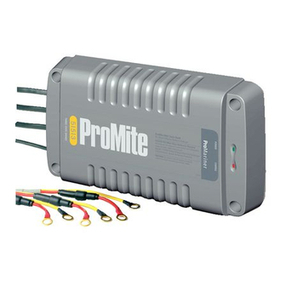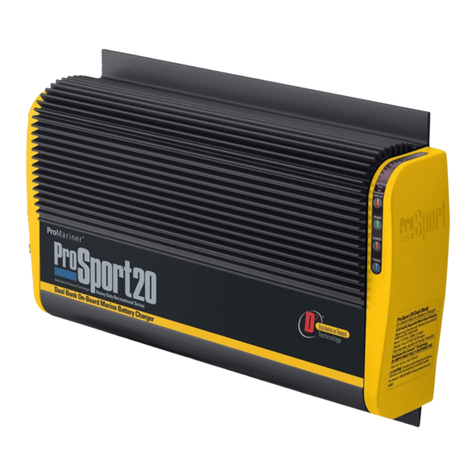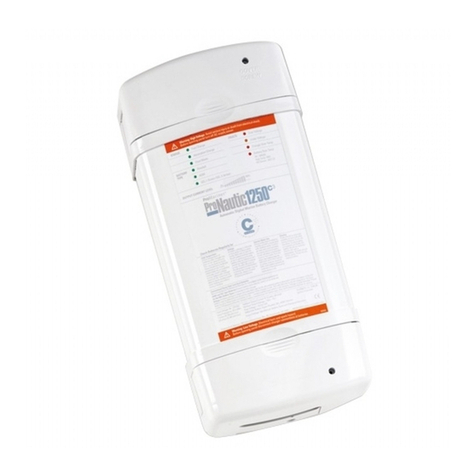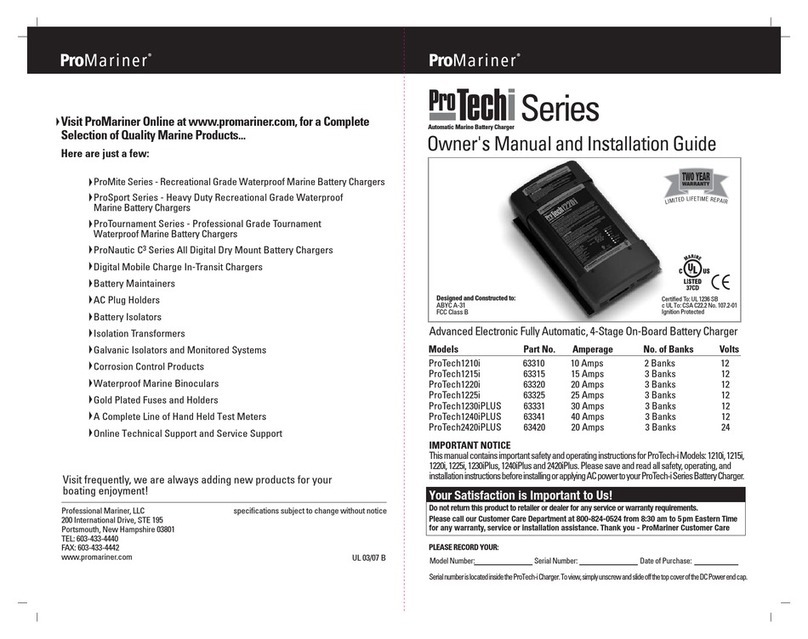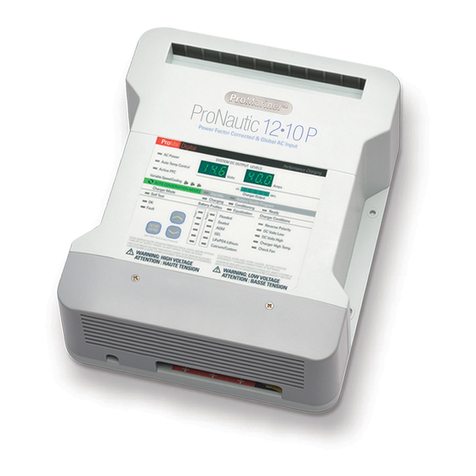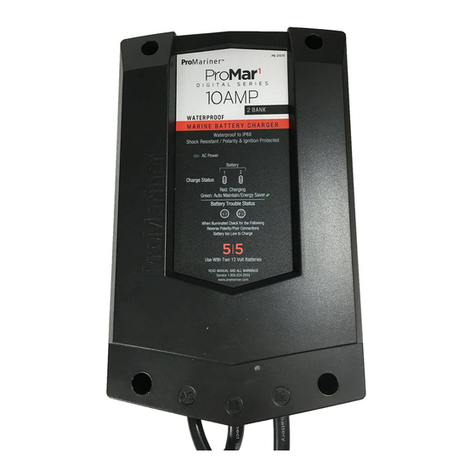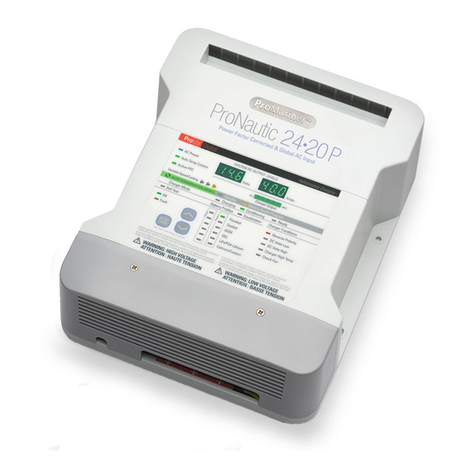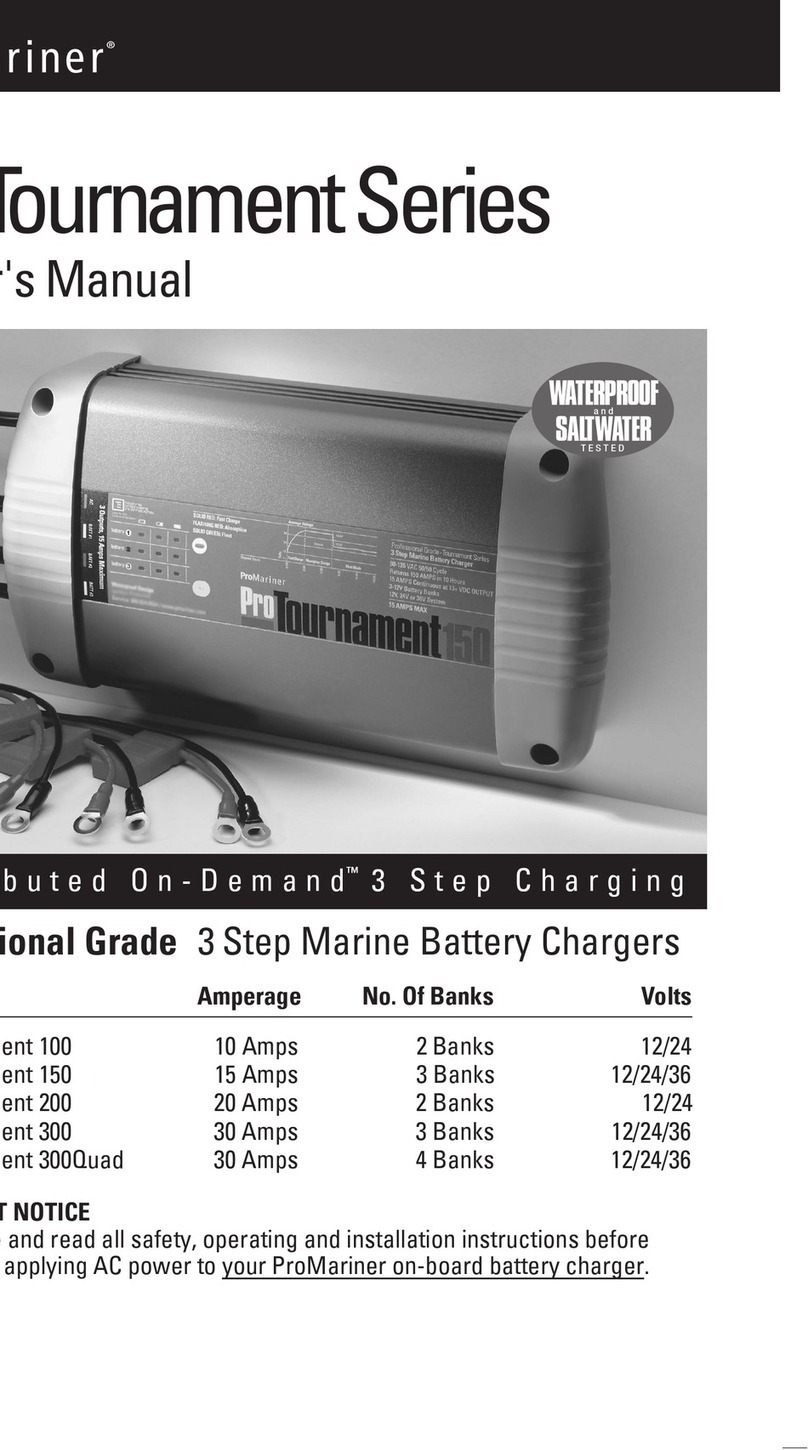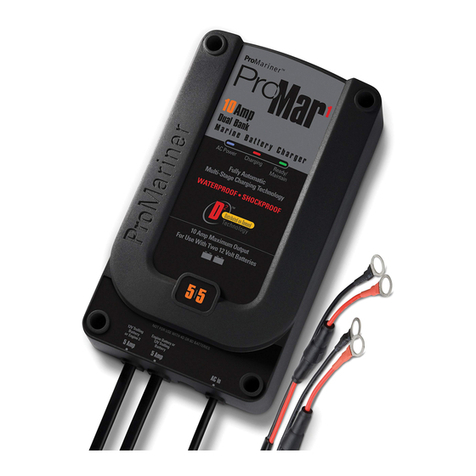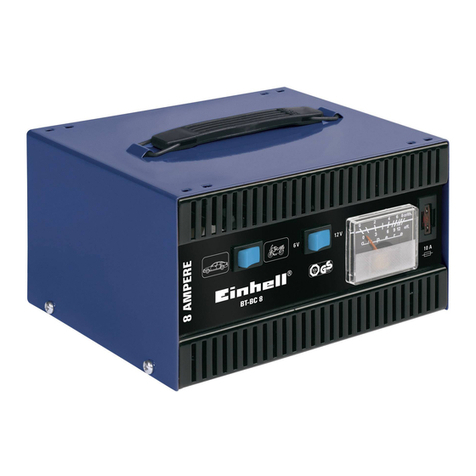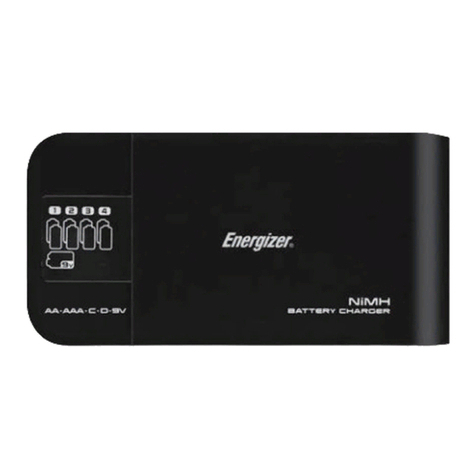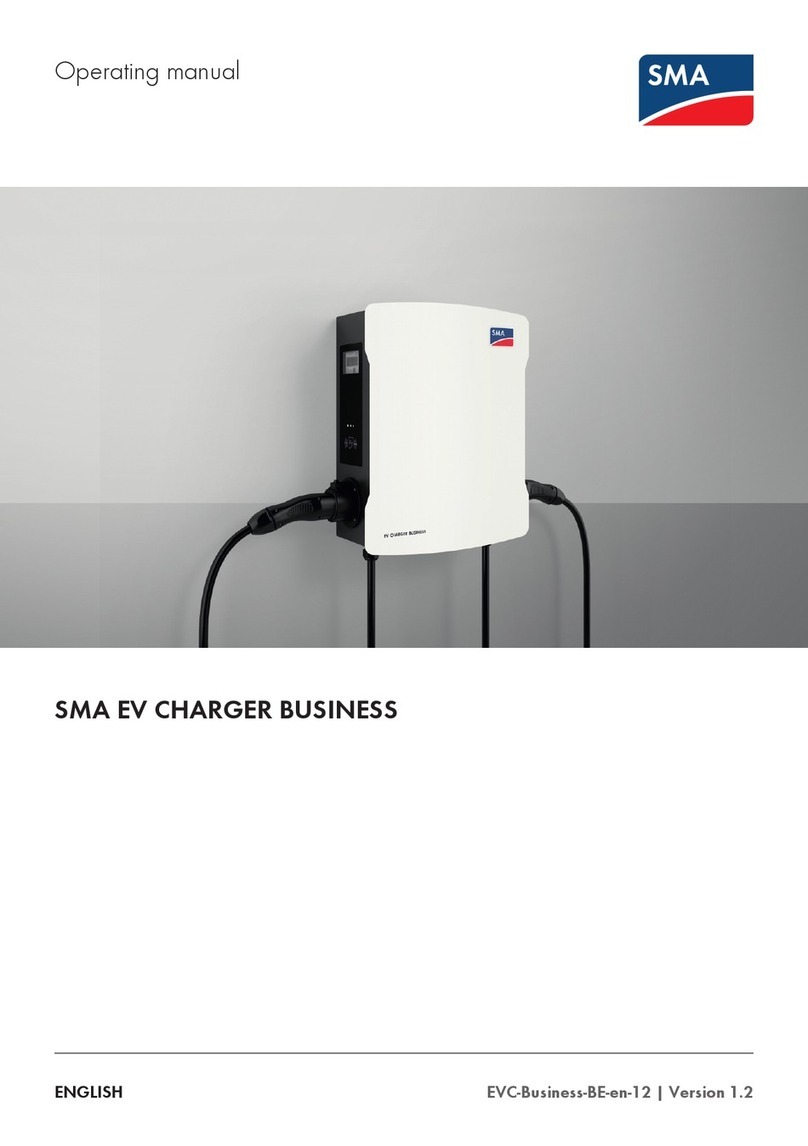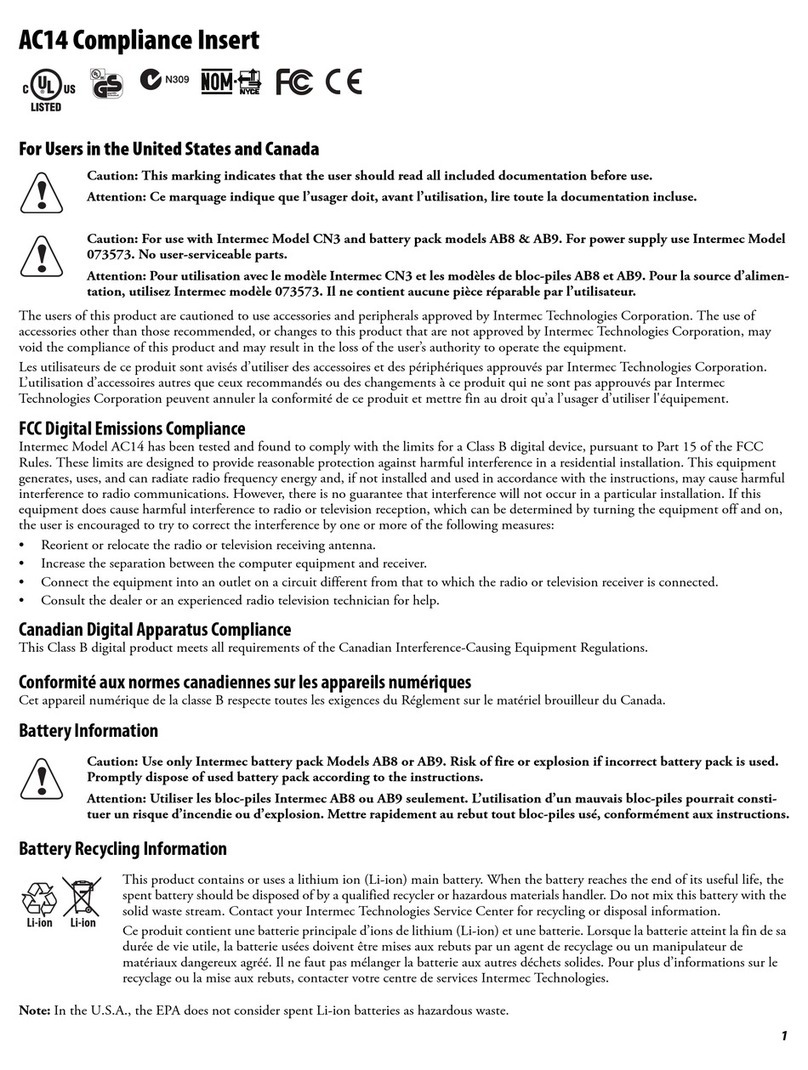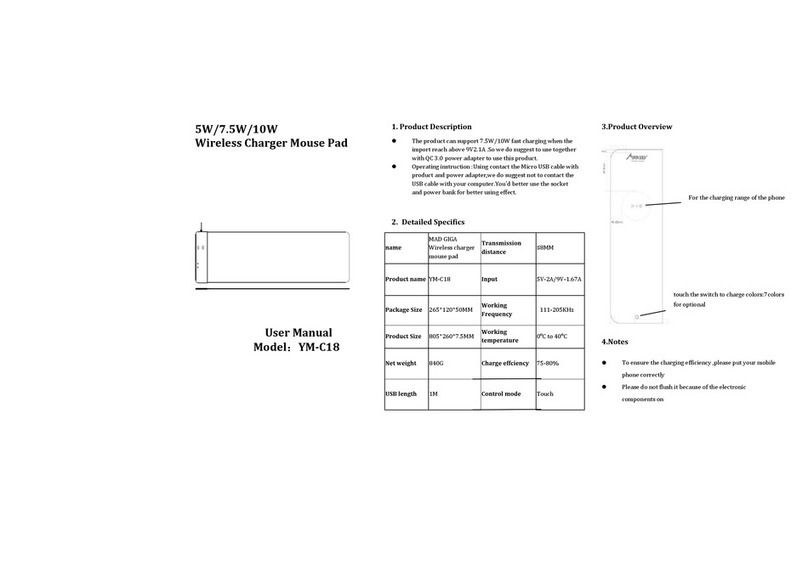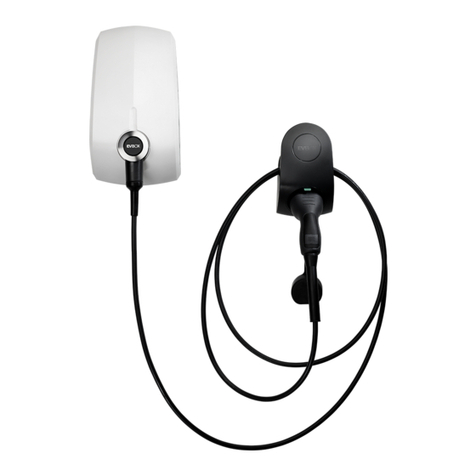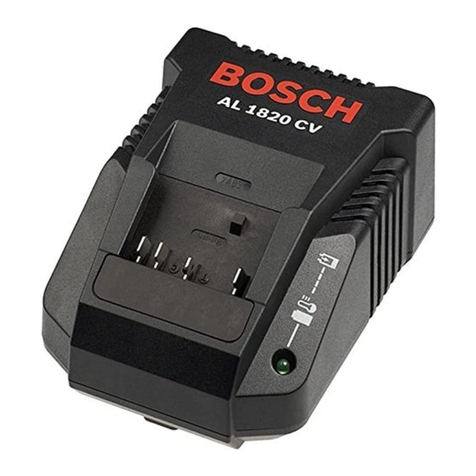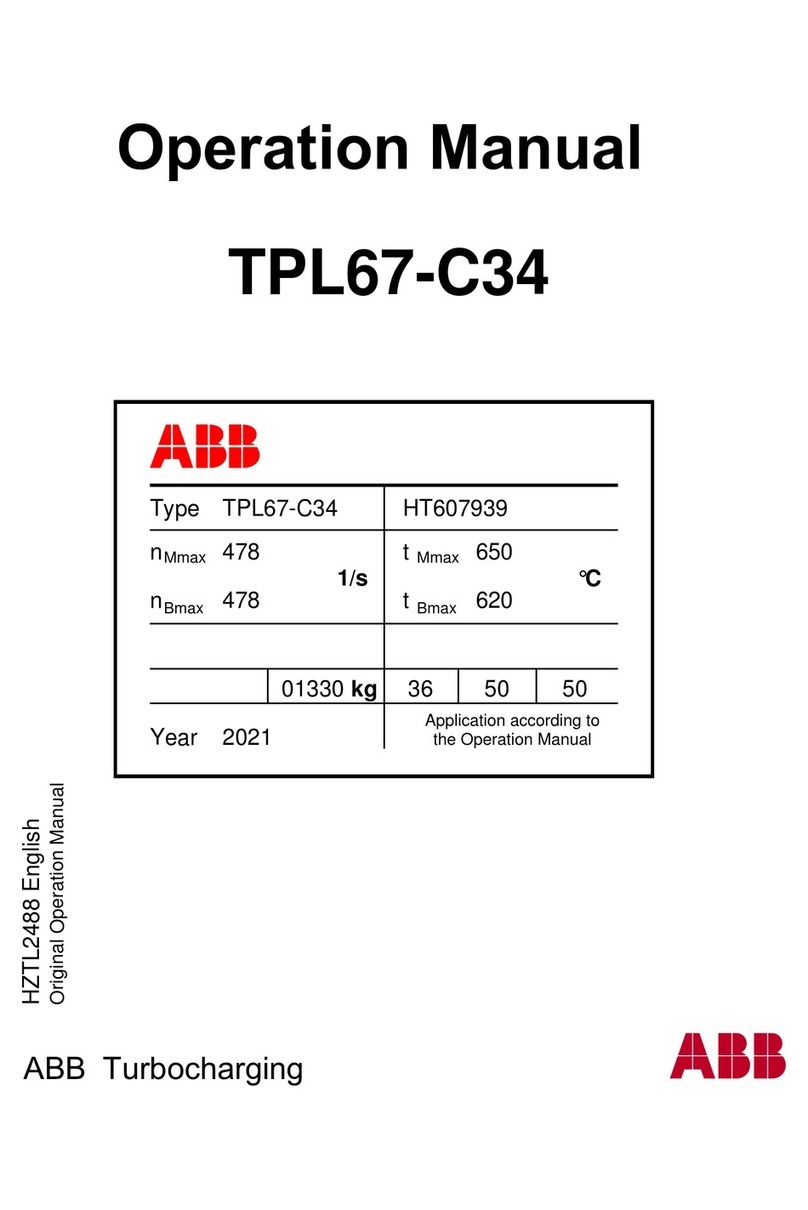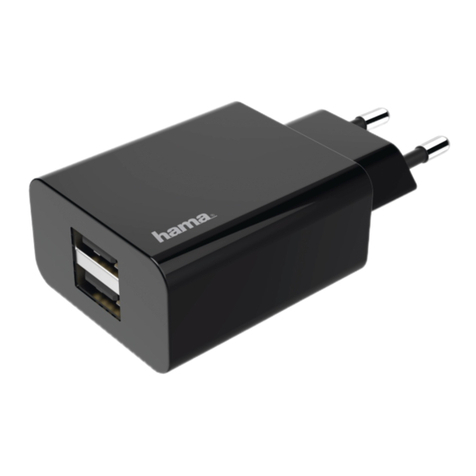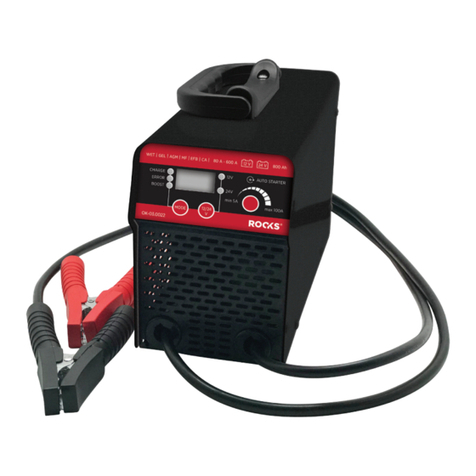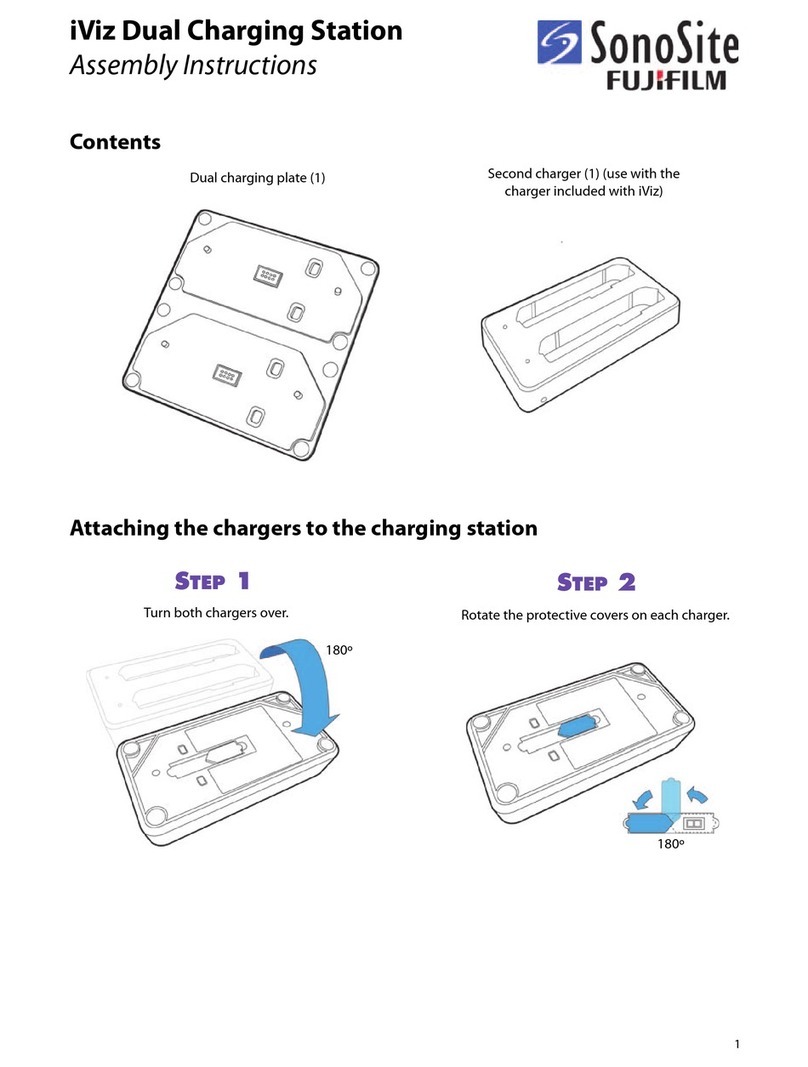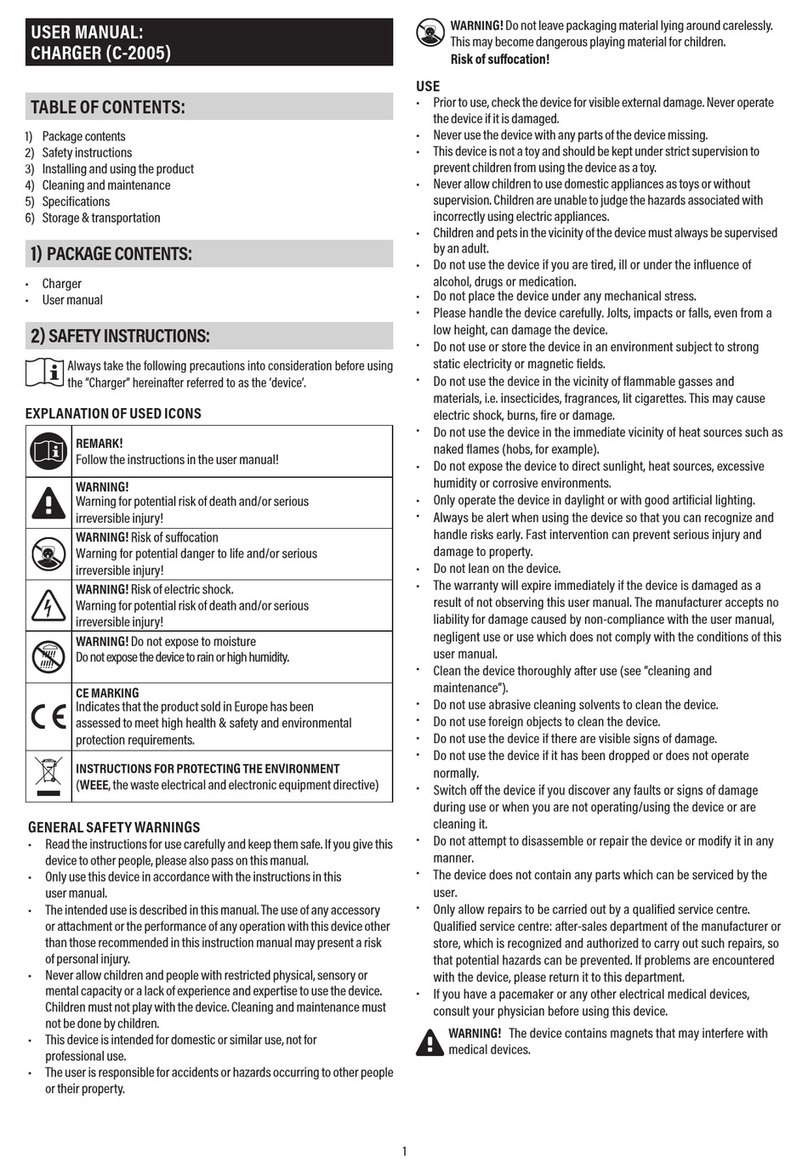Setup and Operation
10
Setup and Operation
BATTERY TYPES - A word on Battery Types and the ProMariner TruePower Combi. As noted
in the Battery Selection Table in the FEATURES section of this manual, this unit can handle 7
different types of commonly available batteries. Batteries are a consumable component and
will, at some point, require replacement. Different batteries are charged with dramatically
different charging profiles. A change in battery type upon replacement will require resetting
of the battery type on the TruePower Combi unit. Identifying the battery type (available on the
battery or by contacting the battery manufacturer) and setting the TruePower Combi accordingly
is a crucial step in ensuring your batteries longevity. ProMariner has pre-programmed the
available settings for optimum care of whatever type of battery you find suits your application.
DO NOT GUESS! If you are unsure of your battery type, contact the manufacturer of the battery.
BATTERY ISOLATION - When charging multi-battery banks it is recommended that a
battery isolator or charging relay be installed. ProMariner offers several options to
maintain isolation between batteries while charging.
OPERATING VOLTAGE - The TruePower Combi (depending on model chosen) will operate
at voltages between 95 and 127VAC 50/60 Hz, single phase. 230VAC models are also
available in various configurations.
CHARGING RATES - The TruePower Combi charger provides 3 stage charging (bulk,
absorption and float) as indicated in the Features section. The bulk or “boost” charge will
operate for a maximum of 12 hours followed by a float charge. After 10 days of float, the
charger again checks for the need to initiate the boost charge. The charger will repeat
this cycle until it is unplugged when it will again start with the boost charge.
RECONDITION/EQUALIZATION - This feature is only recommended for traditional capped
and vented lead acid type batteries. This process uses high voltage over a short period
of time to remove sulphates from the batteries plates. The process “equalizes” the flooded
cells and mixes the electrolyte. Your new TruePower Combi is programmed to perform
this function without damage to your batteries.
STOP!
BEFORE USING YOUR COMBI CHARGER/INVERTER READ
AND FOLLOW THE BELOW CHECKLIST:
NOTE: Install by referring to the Installation section of this manual OR, as recommended by
ProMariner, have your TruePower Combi installed by a Certified ABYC Electrical Technician
Begin with the power switch and main shore/station power breaker in the Off position.
Ensure that all overcurrent protection (e.g. fuses and/or circuit breakers) are ready
for use, not blown or tripped.
Verify all connections are tight, corrosion free and of good integrity.
With AC power applied (shore/station power main On), observe the following
on the Status Indicator Center and the Remote Panel:
!
Installation Guidelines
25
Installation
Inverter 12 Volt DC 24 Volt DC Minimum Cable Minimum Cable
Wattage Amp Draw Amp Draw Size(AWG) 12V* Size(AWG) 24V*
1000 100A N/A 4 N/A
1500 150A 75A 2 6
2000 200A 100A 0 4
2500 250A 125A 00 4
b. Termination - Larger DC cables require specialty tools to ensure proper
termination with ring terminals. Pre-terminated cable kits can be
purchased through ProMariner or your local marine supply store. The
DC stud size is 5/16”. Cable type is as important as size. Cables must be
marine grade and acceptable under ABYC E-11 AC & DC Electrical
Systems on Board Boats (types such as UL 1426 Boat Cable, and SAE
J1127 Battery Cable are common and marked as such)
c. Connection – The ring terminal must be directly on the battery terminal
surface of the DC studs on the TruePower Combi, followed by the washer
and nut with a torque of 10-15 foot-pounds. The use of a dielectric or
anti-oxidant paste is recommended once the cables have been connected.
! DO NOT ATTEMPT CABLE TERMINATION BY MEANS OTHER THAN PROPER
CRIMPING, WITH A PROPERLY CALIBRATED TOOL. SOLDER AND AUTOMOTIVE
REPAIR TYPE BATTERY TERMINALS ARE NOT ACCEPTABLE. USE OF ANY OF THESE
TYPES OF TERMINATIONS WILL RESULT IN PREMATURE, UNWARRANTIED FAILURE
OF THE TRUEPOWER COMBI UNIT.
2) AC Cables – AC Cables should be UL 1426 Boat Cable, per ABYC E-11. This
type of cable is readily available in both 2 and 3 conductor. Size is based on
the maximum amperage to be passed through the cable and unlike DC does
not take into account the length of the cable run and voltage drop. The table
below indicates the proper size for AC Cables.
a. AC Connections – Screw terminals have been provided to connect
the input and output AC cables.
*Based on ABYC E-11 2008 Table VI-A Inside Engine Spaces.
Shore/station power Service Cable Size (AWG) 105°C Insulation
30 amp 12
50 amp 10



















